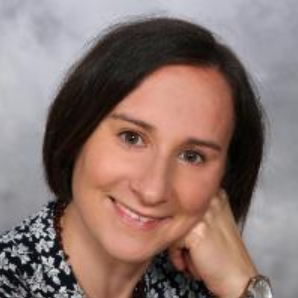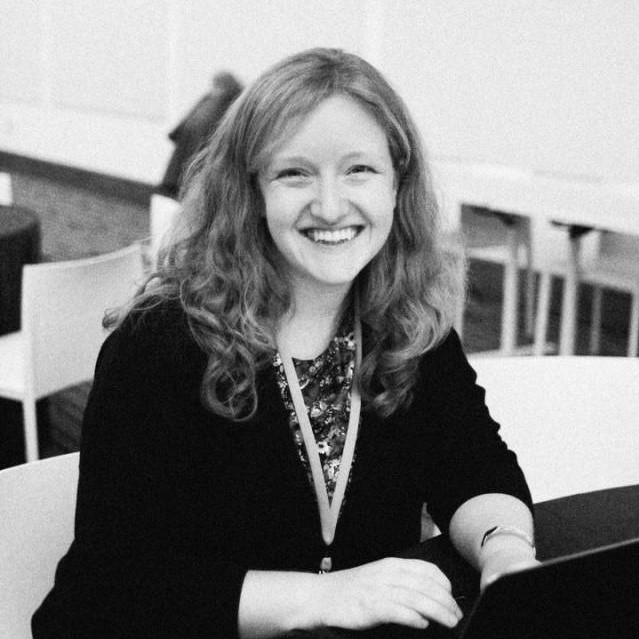Meet the BIDS Steering Group
In October 2019, the BIDS community voted to ratify a new governance structure and to elect five members to oversee the development and adoption of the standard.
Each member of the steering group has their own priorities, but we share a common ambition: to help neuroimaging research more open, interoperable and efficient. We think the Brain Imaging Data Structure, the standard and its community, are a key pathway to achieve this goal.
In this blog post, each of the steering group members have explained a little about their current work, why they wanted to join the steering group, and where they hope we’ll go in the new year.
Guiomar Niso 
Tell us a little about your current research focus and experience.
I’m an AXA Postdoctoral fellow at Universidad Politécnica de Madrid. My research focuses on understanding brain dynamics to improve clinical applications and ultimately people’s lives. I study brain activity in healthy and pathological conditions (e.g. epilepsy, Alzheimer’s Disease, blindness, pain) with M/EEG. I pioneered The OMEGA, the first open repository fully dedicated to magnetoencephalography (MEG) and I contribute to the development of open software packages aimed to analyze neurophysiological signals, such as Brainstorm or Hermes. In the BIDS community I led the international effort to develop the MEG-BIDS extension.
How did you get involved in BIDS?
While working on The OMEGA repository with Sylvain Baillet at the Montreal Neurological Institute, we realized how difficult it was to organize the MEG data and metadata in a common way due to the lack of standards in the field. Together with my colleague Jeremy Moreau we were planning to implement an organization scheme based on json files, when we discovered the BIDS, so we decided to join forces! Thanks to the incredible help of Chris Gorgolewski and the super responsive MEG community we finally managed to get the BIDS extended to MEG in 2018. It was a big hit, the first BIDS specification for neurophysiological signals, which settled the base for the future EEG and iEEG BIDS extensions.
Why did you choose to run for election to the steering group?
I am passionate about the project. I found the BIDS community was an incredible willingful and committed group of people. During the elections, I thought it could be enriching to have a panel gathering representatives from all the modalities (i.e. MRI, MEG, EEG, iEEG, PET) formed by people from all around the world at different stages of their career, as this could constitute a very transversal steering group which may provide a global perspective to the BIDS. Following this thought, I presented our panel formed by an awesome multidisciplinary group of volunteers… and it seems people liked the combination! I am very happy to contribute with my experience to push the BIDS forward.
What does success look like for BIDS, in your opinion?
A standard where all modalities get represented so the brain could be studied as a whole and the different techniques could be easily integrated rather than partially studied, fostering data sharing and reproducibility. This will facilitate an integral understanding of the brain. Equally important, is that BIDS becomes a standard that everybody could easily adopt and contribute to its development, eliminating barriers to benefit from the most heterogeneous and multidisciplinary groups of talented people possible.
What are you hoping to achieve in the next year?
The world is full of examples of the real progress that standards provide, from USBs to the size of credit cards. I come from telecommunications engineering and I see the analogy with the indispensable role they had in the revolution of tv, phones or the internet. I want to work to make the neuroscientific community aware of the importance of using a common standard, like the BIDS, to organize data, highlighting its impact in data sharing, multimodal integration and reproducibility. This will provide a boost in the neuroscientific field. We will put efforts to foster community participation, looking for accessibility and inclusion. I am very passionate about extending the BIDS to new modalities and developing derivatives for all of them, which is the next coherent step after the raw data is organized. I would also love to promote the implementation of BIDS apps for different goals (e.g. prepossessing, analyzing pipelines, etc) so they can be easily run and integrated into automated platforms. There are so many encouraging plans for next year!
Melanie Ganz 
Tell us a little about your current research focus and experience.
I am currently a researcher at the Neurobiology Research Unit at Rigshospitalet, Copenhagen and have an appointment as an assistant professor at the Department for Computer Science at the University of Copenhagen. My research interests include the application of image processing, computer vision and machine learning techniques in medical imaging as well as the statistical interpretations of results retrieved in medical imaging problems.
How did you get involved in BIDS?
In 2016, the NeuroReceptor Mapping conference (NRM2016) in Boston hosted a panel discussion regarding positron emission tomography (PET) data sharing. The audience unanimously supported a motion to establish a working group that would propose guidelines for data sharing. Following this, in fall 2017 I attended NeuroHackWeek in Seattle and met Chris Gorgolewski. Chris had been called in by the PET community to help with data standardization and with adopting a PET BIDS extension. When he heard that I am interested in data sharing and working with PET and was actually located in one of the biggest PET labs worldwide, he asked me if I could help with the development of the PET BIDS extension (BEP0009).
Why did you choose to run for election to the steering group?
My biggest motivation for working on BIDS is the aim of facilitating data sharing. Compared to MRI and most other neuroimaging modalities, PET is a very expensive, technically challenging and invasive technique. This leads to sample sizes in general being low (~20-50 people) and to data analysis workflows being highly dependent on the neuroimaging lab that acquires the data. So I am really hoping to get momentum in the PET data sharing world and hence it was a natural interest of mine to get involved in the steering group to represent PET.
What does success look like for BIDS, in your opinion?
For me that clearly means adoption of BIDS by researchers and sharing of data. Adoption can be in terms of standardizing analysis workflows to be BIDS compatible, but also to storing data locally and on data sharing sites in BIDS format.
What are you hoping to achieve in the next year?
My main focus will be on outreach to the communities that are not yet heavily involved in BIDS. For example, compared to the MRI community the PET community needs to reinvent itself and embrace data sharing as recently has been pointed out in a major PET journal. To this end I am actively involved in organizing a data sharing/BIDS workshop at NRM2020 and to get more PET researchers interested in contributing to and using BIDS. As a steering group member, I want to identify further imaging modalities/derivatives in the need of standardization and get them started on the road to BIDS and support them with embracing BIDS.
Robert Oostenveld 
Tell us a little about your current research focus and experience.
I am associate PI and MEG physicist at the Donders Institute. My main research interest is in the development of analysis methods for MEG and EEG, although I also work with iEEG, NIRS, (f)MRI and other types of data. About 15 years ago, I initiated the development of the FieldTrip toolbox, triggered by the need in our lab to do state-of-the-art analyses in a reproducible and efficient manner; and to day we continue to develop it with this in mind. I am (co)supervising many cognitive neuroscience students and colleagues; developing open source code and open documentation is for me the way to work efficiently and to share and accumulate knowledge in a wide network.
How did you get involved in BIDS?
The MEG research community mainly depends on a small number of open source toolboxes: MNE-Python, SPM, BrainStorm and FieldTrip. The developers of these toolboxes share very similar ambitions and goals, and we regularly meet at conferences, workshops or training events. For the MEG extension to BIDS we teamed up to get our knowledge and that of our respective user communities represented. Following the publication of the MEG extension, it was only natural to remain involved in the EEG and iEEG extension.
Why did you choose to run for election to the steering group?
Besides developing MEG/EEG methods and tools, I am involved in the research infrastructure and in the data management of our institute at large, which covers many different experimental research questions with different scanners and and experimental set-ups. It is obvious that brain data from imaging methods and electrophysiology needs to be properly managed, but I also find it important that details of cognitive experiments - which often involve multiple behavioral modalities - can be properly documented and shared. Structural and resting state data are important and interesting, but documenting and sharing data acquired in relation to cognition and behavior raises the complexity even further.
What does success look like for BIDS, in your opinion?
I hope that BIDS achieves success on multiple levels. One is that many more researchers get over the initial hurdles for sharing data, and for more efficient reuse of data that was shared by others. Another is that the common “vocabulary” - that we are required to develop to organize shared data - will help in developing better research tools, pipelines and strategies. Working together on data increases the awareness and understanding of details in different lab and experimental setups.
What are you hoping to achieve in the next year?
The number of stakeholders that either rely on BIDS for their data or for their tool development has grown very rapidly in the last years. I hope that we can improve communication to maintain a considerate, robust and consensus-based development model of the specification. Furthermore, I hope that we can extend BIDS with more raw data types, like eye-tracking, NIRS, PET, genetics, and more behavioral measures, and that we can establish a strategy for documenting and sharing processed data.
Russell Poldrack 
Tell us a little about your current research focus and experience.
I am a professor of psychology at Stanford. My main basic research interests are focused on the brain systems involved in decision making and executive function, primarily using fMRI. In the last decade I’ve become increasingly interested in meta-scientific topics focused on reproducibility and transparency, including involvement in a number of data sharing initiatives including OpenNeuro, NeuroVault, and NeuroSynth.
How did you get involved in BIDS?
I was involved in BIDS from its inception. BIDS grew out of an earlier organizational scheme that we had developed for the OpenFMRI project, but its shortcomings were evident, and we wanted to develop a standard that would address a much broader range of needs across the neuroimaging community. I worked closely with Chris Gorgolewski in the development of the first draft of the standard, and have remained involved (though not deeply in the technical trenches) as the standard has blossomed. I’ve been particularly interested and involved in the BIDS Derivatives standards.
Why did you choose to run for election to the steering group?
I think that my knowledge of the history and background for BIDS as well as my broader view of the field of neuroimaging puts me in a good position to help guide its growth in the future. I also have lots of experience with management of large projects, which I hope to bring to bear as BIDS matures.
What does success look like for BIDS, in your opinion?
Adoption. A standard is only useful if researchers in the field actually use it. So far that has worked well for BIDS, but I would love to see more support from standard software packages, particularly as the BIDS Derivatives standards mature.
What are you hoping to achieve in the next year?
I hope that we can continue a smooth transition to shared governance of the project, and continue to engage a more inclusive group of researchers in the project.
Kirstie Whitaker 
Tell us a little about your current research focus and experience.
I’m a research fellow at the Alan Turing Institute. I joined with a research proposal saying I would try to replicate findings looking at brain development and the emergence of mental health conditions in the published literature, but I very quickly found that publications themselves don’t share enough information to reproduce their own findings, nevermind doing the same thing in another cohort. So now I work to incentivise reproducible research and contributions into open source communities.
How did you get involved in BIDS?
I really love the goal of BIDS - life would be so much easier if everyone’s data and code were interoperable with each other - but I found the specification itself really difficult to follow. So in 2018 I mentored Patrick Park - a Google Summer of Code student - to develop the BIDS Starter Kit. Our goal was to demysify some of the jargon (what even is a json file?) and make it easier for folks to get started. I’m also one of the lead developers of the BEP001 extension which is working to include quantitative MRI sequences in the specification.
Why did you choose to run for election to the steering group?
I have lots of opinions (don’t we all), especially about how to build and engage open source communities. I’m particularly interested in expanding the number of people who participate in setting the future directions for BIDS. The project’s greatest strength is that the specification is community-led and responsive to their needs. I wanted to join the steering group to see BIDS meet its potential to make the lives of neuroimaging researchers easier around the world.
What does success look like for BIDS, in your opinion?
Success in my eyes would be that everyone collecting data never had to think about how to save their files. From the minute the data came off the scanner, it would be in a well documented directory structure that was the same as everyone else’s. In addition, all those researchers would have access to well documented open source tools to help them explore and summarize the scans they had acquired. Ultimately, I want people working on brain imaging data to be focused on thinking about (and implementing) interesting research questions, not how to find stray typos in the data file names.
What are you hoping to achieve in the next year?
The first thing I’d like the steering committee to do is map the community and conduct a pluses and deltas exercise: what are the things they like and what would they change? I suspect that the move to communications on GitHub has been difficult for a lot of people - there are many more notifications than when we had discussions on the mailing list and I think people find it hard to keep up. So probably a clearer dissemination system to keep people updated on what’s going on would be really helpful.
Thank you from the BIDS Steering Group
Thank you to everyone who stood for election to this inaugural year of the BIDS steering group. It is a great strength of the community that so many people are committed to the development, maintenance and adoption of the Brain Imaging Data Structure.
We are proud to shepherd this community into 2020, and beyond.
— Kirstie, on behalf of the BIDS Steering Group